February Flowers In The Garden
It is early February, the days are getting longer here in the Northern Hemisphere and we need a bit of cheering up during what is still winter. What flowers are in season in February in the UK?
I thought that I would go round my garden and take photographs of the flowers that are out in my garden so you can see first-hand what you can grow too. The flowers are not in any particular order.
First up is Winter Jasmine (Jasminium nudifolium)– this started flowering just before Christmas and there are still a few flowers left. It has been brightening up my patio outside the back door for months.
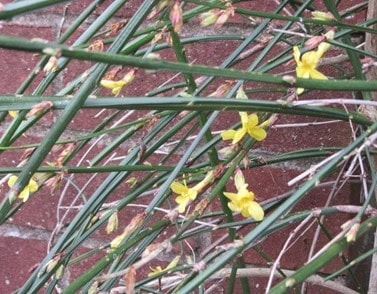
Winter jasmine is a really easy plant to grow – it is tolerant of all soil types and aspects (north, east, south or west facing), is happy in either direct sunlight or partial shade and is quite hardy tolerating temperatures down to -15°C. It I best grown against a wall where it can be tied in as it produces long arching stems that do not cling. It is a deciduous shrub and so loses it’s leaves in winter, but it makes up for this by being covered in bright yellow flowers for months during the dark days of winter. It is easily propagated by either layering or by taking semi-hardwood cuttings. To keep the plant in check, prune immediately after flowering as this plant flowers on the new shoots grown in the spring & summer. If you prune in the autumn, you will lose all the flowers in the winter. You can plant pot grown plants at any time of year as long as you keep it watered for the first year.
Next is the snowdrop (Galanthus nivalis) – many of us eagerly look forward to finding the first snowdrop flowering which can be as early as Christmas. By February though, snowdrops are generally in full flower. I am not a Galanthophile (a person who collects snowdrops), but I do have more than one type. I have double snowdrops which originally came from my mother’s garden. Wherever I go, I take a few for the new garden. I have some single ones too that also came from my mother’s garden. There are also some different ones that came from a neighbour and I have some Galanthus “Atkinsii”.
Snowdrops are another easy to grow plant for any garden. For them to naturalise and spread, they do prefer a moist soil. They are very hardy and grow well in semi-shaded positions. They are best planted when the bulbs still have green leaves (known as planting in the green), or in late April and May when the foliage has just started to die off. The bulbs so not like to dry out, so if you buy bulbs in the autumn plant them as soon as possible.
The snowdrops will gradually increase over the years and if you can split up the clumps you can gradually create a ‘drift’ of snowdrops which look stunning.
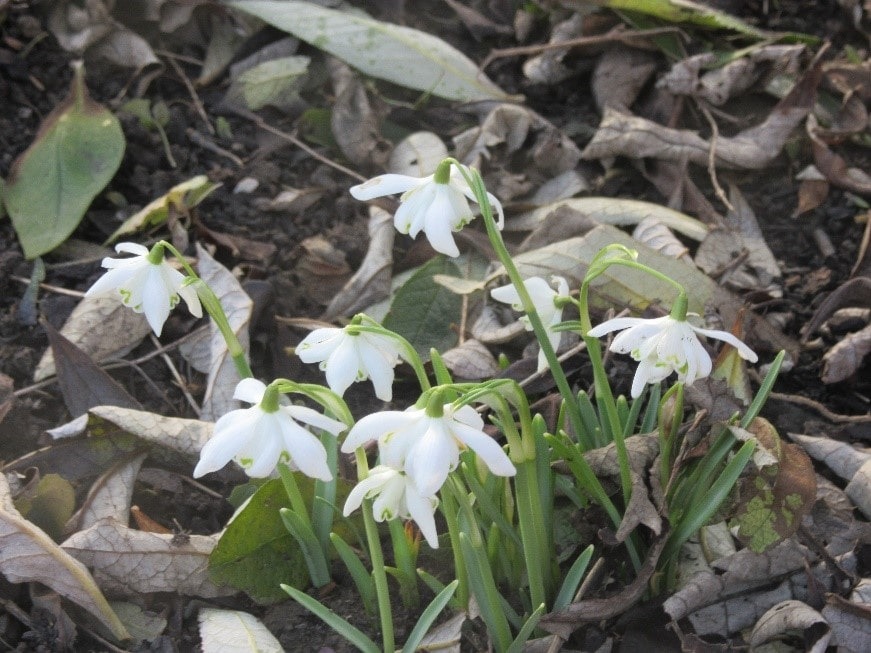


Then we have Crocuses. There are several different species of crocus most flower in late winter to early spring but some flower in the autumn. In my garden at the beginning of February I have several different colours in flower. There are many more to come yet.
Crocuses are also a very easy plant to grow. They are very hardy tolerating temperatures down to -20°C however they do prefer full sun and soil that drains easily. They can be planted under trees that lose their leaves in the winter, where they will flower before the leaves appear. Crocuses tolerate most soils. For early winter and spring flowering crocuses, the corms need to be planted in November when the soil temperature has begun to drop. They need a cool period of between 12-16 weeks, so bear this in mind when you first plant your corms. Plant the corms in groups, 3inches deep and 3-4 inches apart.
You may notice your crocus flowers opening up on a sunny day in the spring and then closing as the sun disappears. This is a great strategy for the flowers as they are able to protect themselves from harsh weather.
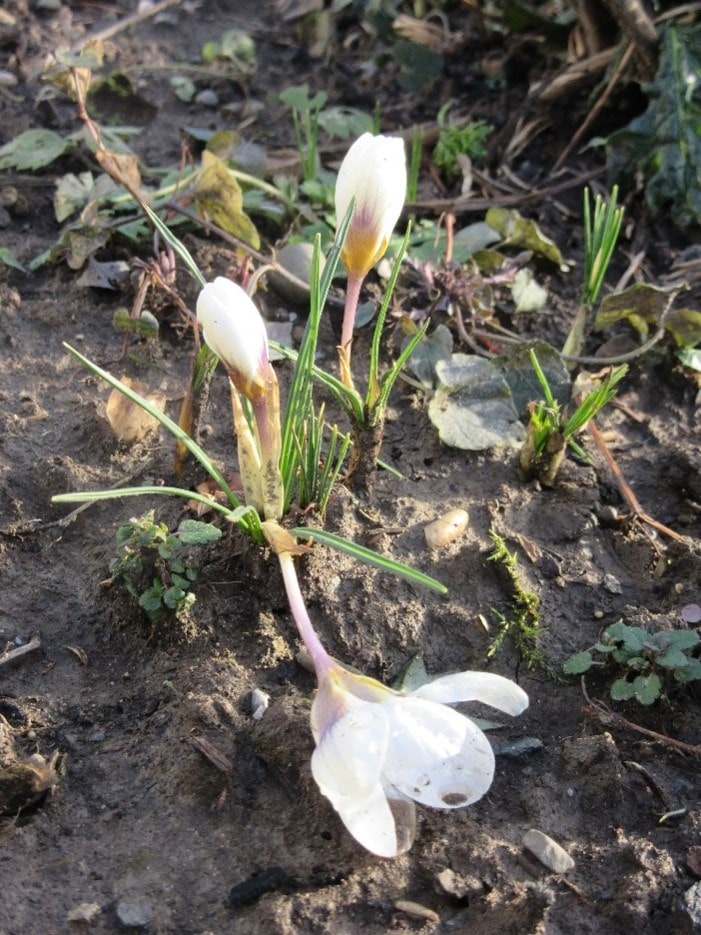
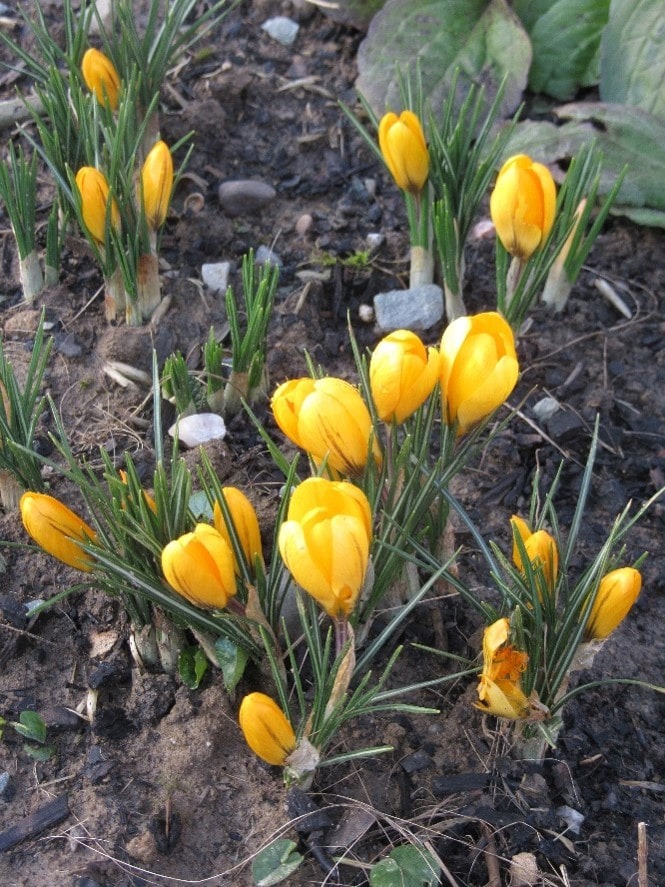
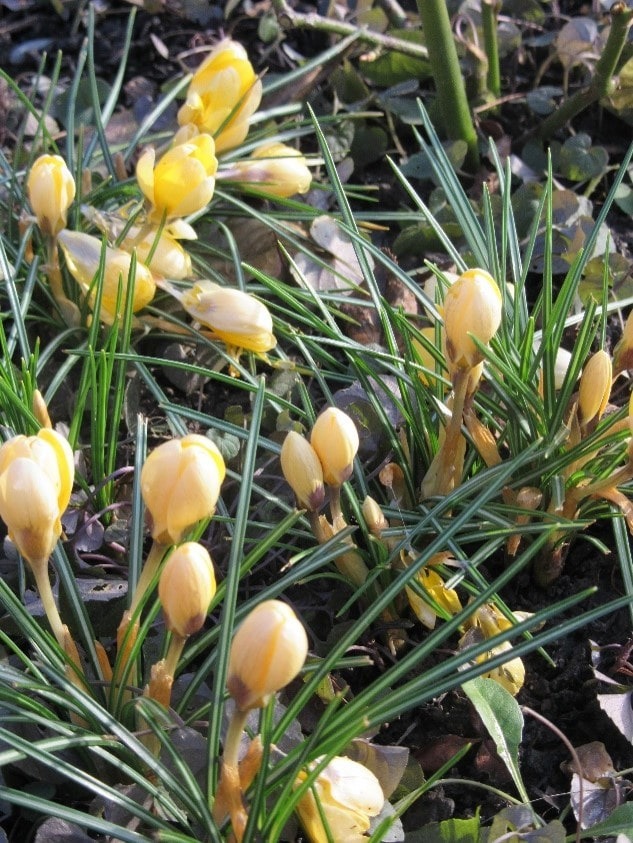
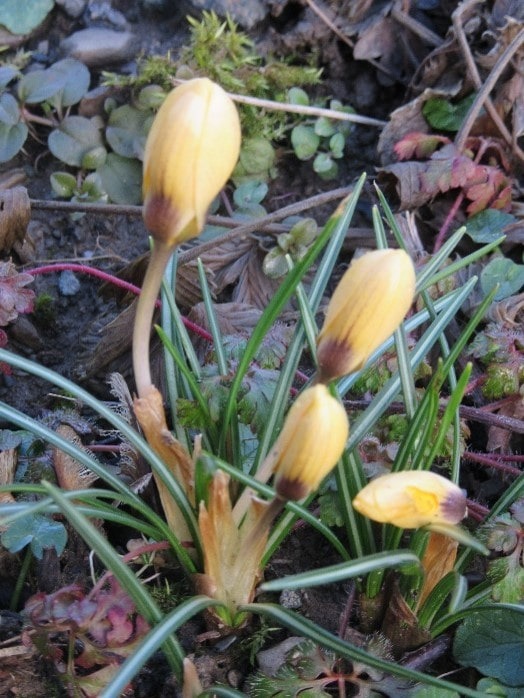
The next flower is the early bulbous iris (Iris reticulata). This is a beautiful early flowering iris growing to about 15cm in height. It is often grown in rockeries and gravel gardens as it is a small plant, but it does like a neutral to alkaline soil which is moist in the spring but is dry in the summer and autumn. They will grow in any aspect and don’t mind an exposed position. In the wild these irises grow in the cold and dry mountains of Turkey, Iraq, Iran and Russia so they are very hardy.
I love these irises and I like to add to my collection each year. The flowers range from light blue to deep purple.

An unusual February flower in my garden is the Lesser Celandine (Ficaria verna). This is actually a wild flower native to the British Isles and some consider it a weed. I actually love this flower in the spring as it is so cheerful and the leaves are a beautiful glossy heart shape. Luckily this plant although very invasive dies down in late April so you would never know that it was there until the following spring. It usually flower from March, but I have noticed in my garden that it begins to flower much earlier and this year I have some in flower at the beginning of February.
There is a cultivated variety, but I prefer the wild form as this provides valuable nectar and pollen for early pollinators such as queen bumblebees.
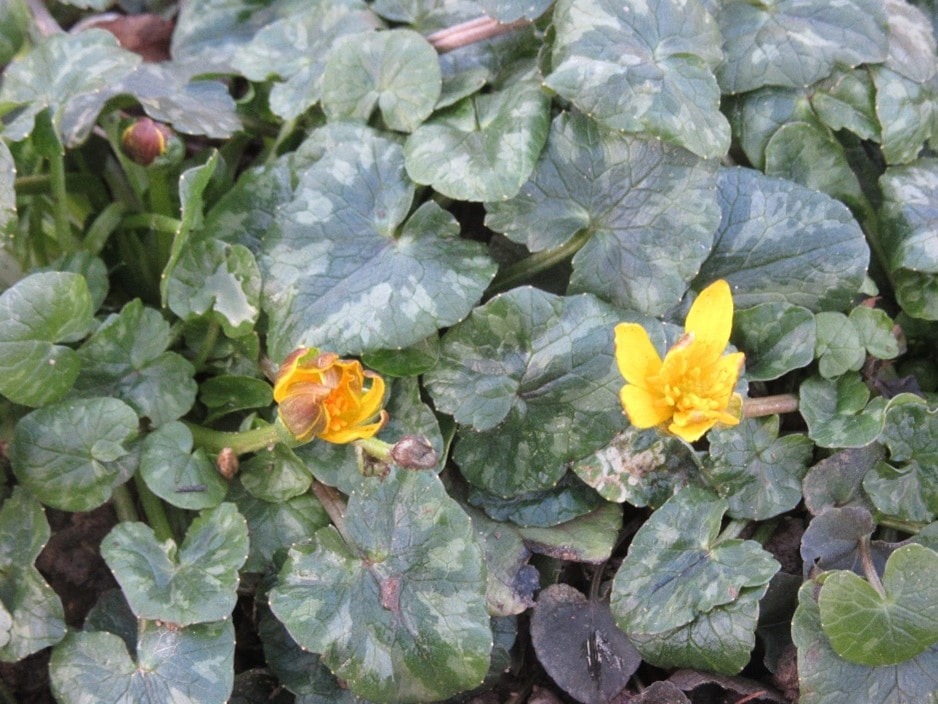
Another flower in season in February is heather (Erica sps). This started flowering in January and is still looking good. This plant came from a friend and so I don’t know that variety, but it looks beautiful and it is another plant providing food for early flying bees and other insects. The Erica species of heather can be grown in acid or alkaline soils, is hardy and requires little maintenance. Plant in the spring or autumn.
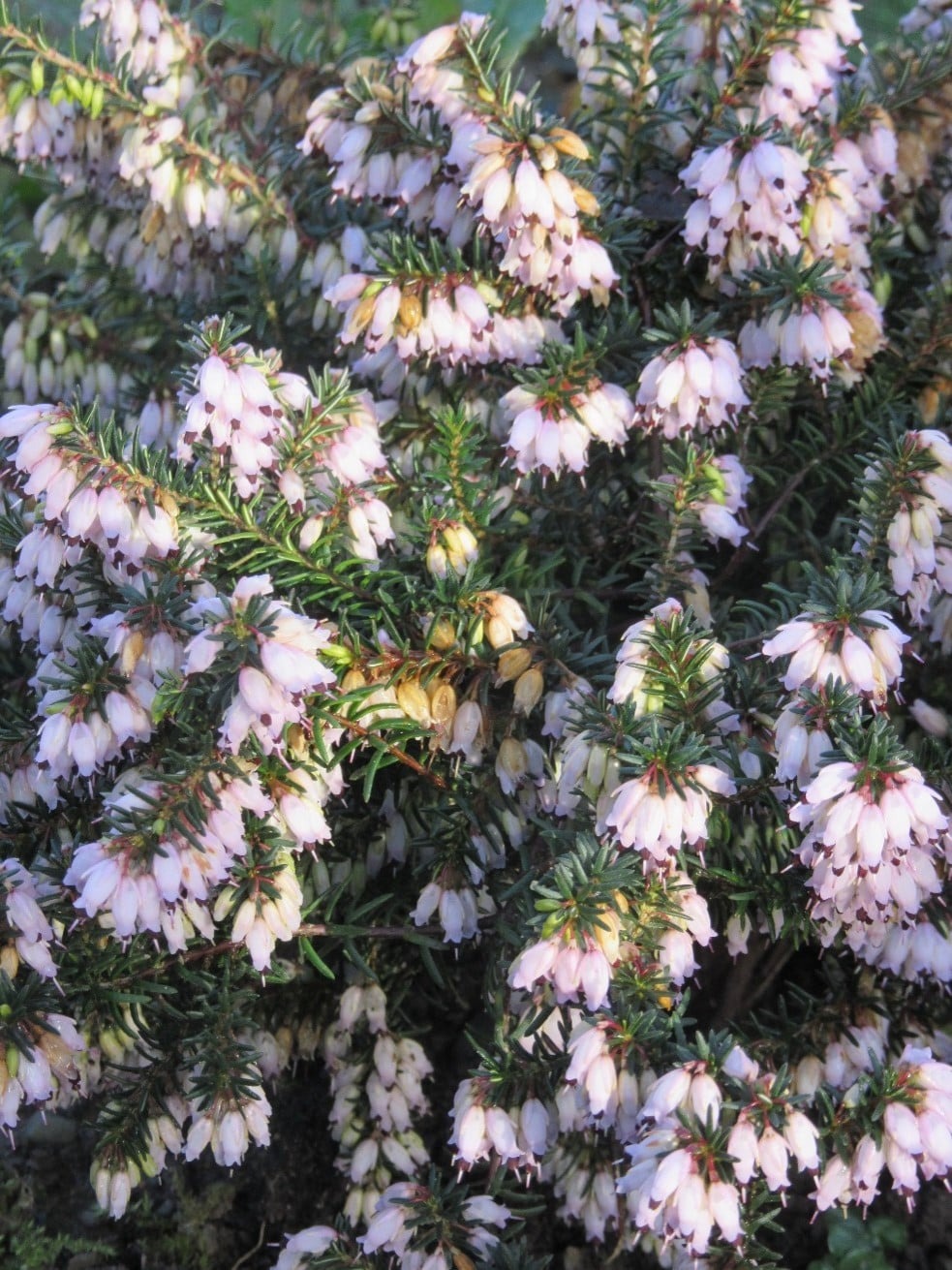
Now we have the lovely scented winter flowering shrub the Winter Flowering Honeysuckle (Lonicera fragrantissima). This is a bushy deciduous shrub which grows up to 2.5 meters tall and wide. It tolerates all aspects, is happy in a sheltered or exposed position in full sun or partial shade and tolerates all soil types as long as they are not too wet. It flowers in winter and early spring with wonderfully scented cream flowers. Keep the bush in check by pruning after flowering.
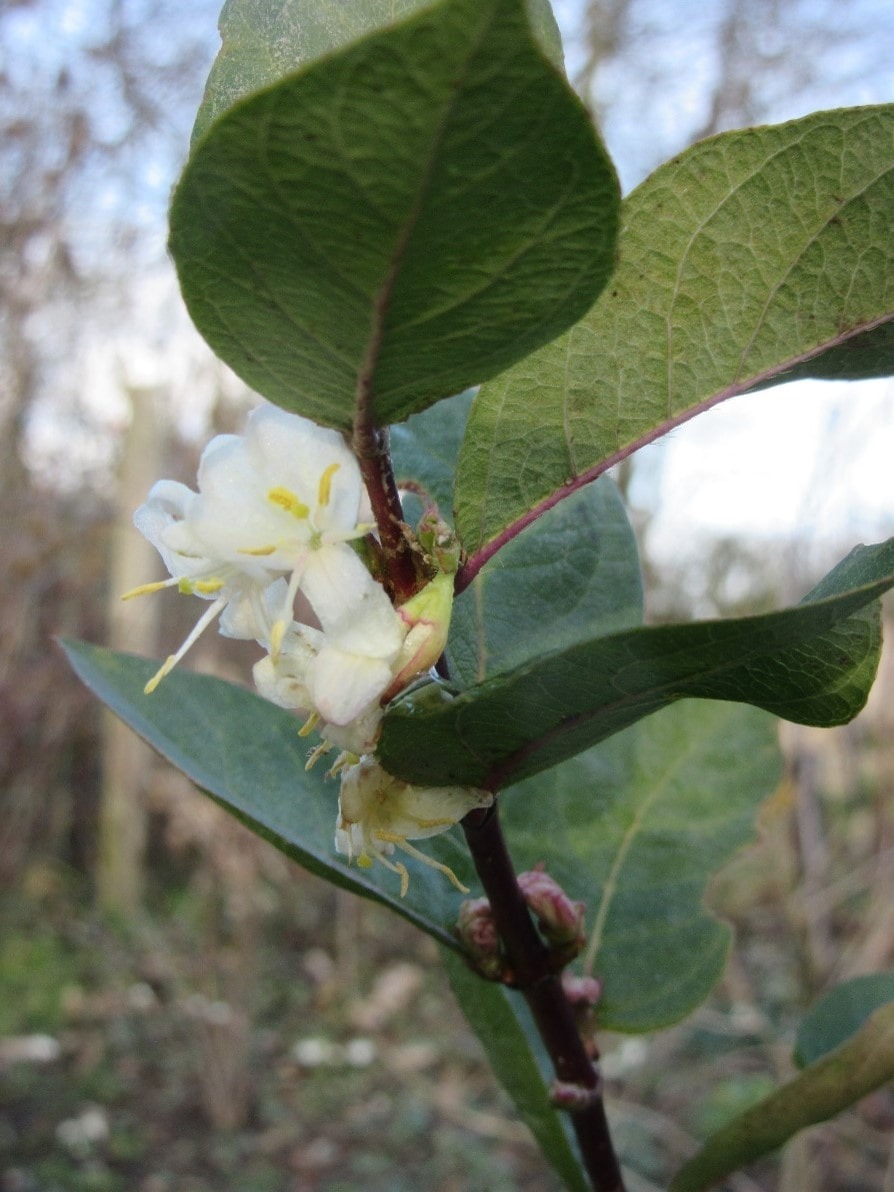
The next February flower is the cultivated polyanthus which comes in many different colours – some very bright. These are often sold in garden centres in the autumn for winter bedding and they can provide lovely splashes of colour in the garden throughout the winter. They are generally hardy in the UK.


Then we have the Balkan anemone (Anemone blanda) or winter windflower. Another very hardy perennial plant tolerating temperatures down to -20°C. It prefers moist well drained soil and is happy at any pH, any aspect and either a sheltered or exposed position in full sun or partial shade. It usually begins to flower in March, but this year it is flowering at the beginning of February! Put the plants in the ground in the autumn and make sure that the tubers do not dry out. This anemone readily self-seeds so you can soon have a carpet of blue and white.
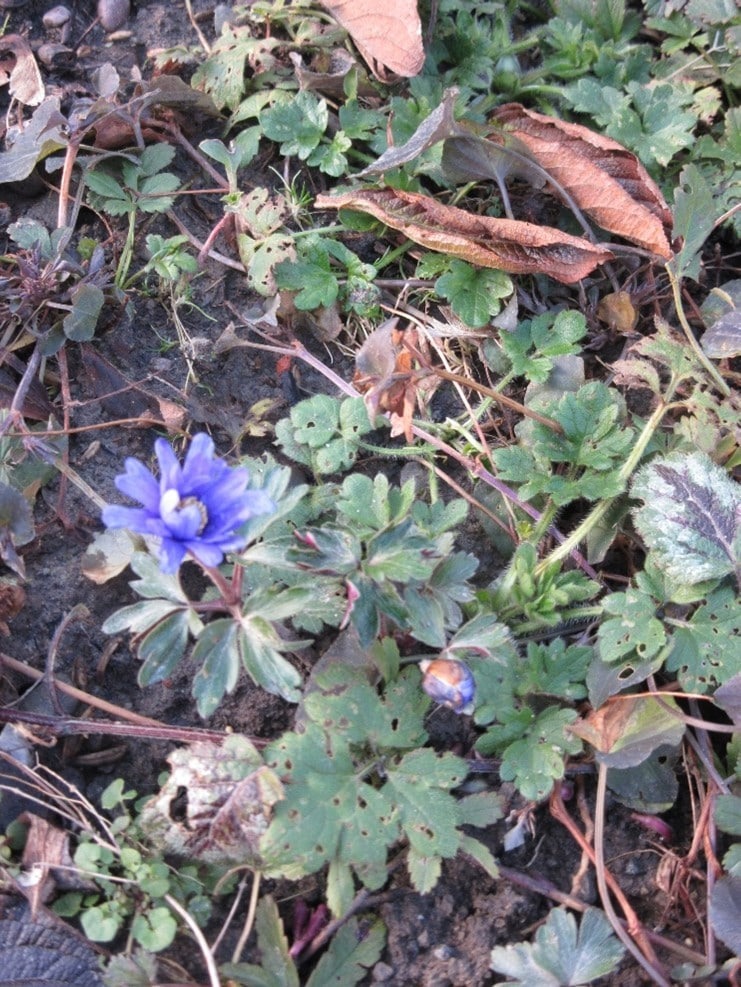
Now we have the lovely Viburnum Bodnantense ‘Dawn’ which has been flowering since the beginning of January. This is a well-known winter flowering shrub with highly scented flowers. It is very hardy – tolerating temperatures down to -20°C and grows in any well drained soil. It does not require much maintenance and can be cut back hard when it has finished flowering.
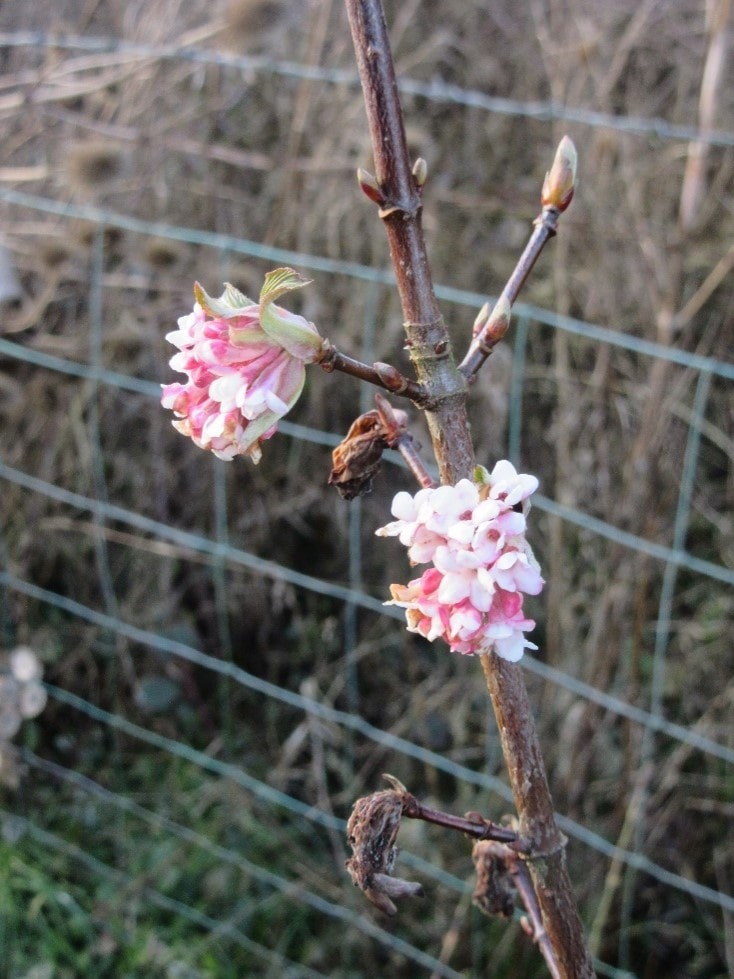
Next is another viburnun this time Viburnum tinus. This is a large evergreen shrub with clusters of white/pink flowers from February to April which are fragrant. It will grow in full shade, semi-shade or full sun and is happy in any moist well-drained soil tolerating any pH. It does prefer a sheltered postion away from cold winds. It is a hardy shrub tolerating temperatures down to -20°C.
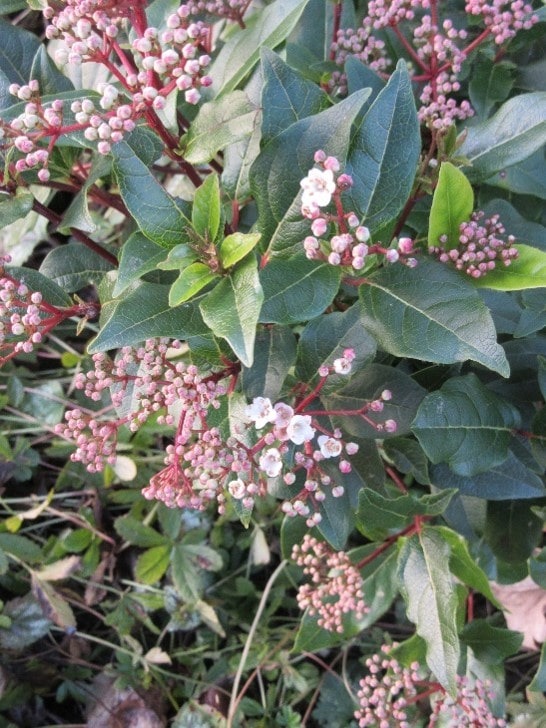
Next are Hellebores often known as the Christmas Rose, however this hellebore is quite difficult to grow in the garden and I grow hybrids – Hellebore x hybrida. These come in many different colours and are easy to grow. Many will self-seed around the garden and you never know what colour will appear. The one that is out in my garden at the beginning of February is white with beautiful markings.

The last February flower is a periwinkle (Vinca major). The one in my garden is a variegated form. This plant will spread everywhere and needs keeping under control, however it rewards you with lovely purple flowers. There is a white form as well. It is a ground cover plant that tolerates all soils and any pH and it very hardy tolerating temperatures down to -20°C.
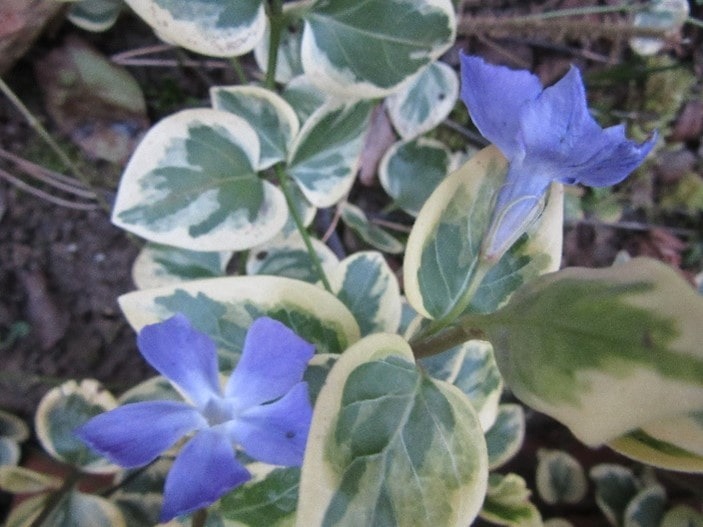
That completes the February flowers in my garden. Next month we should see many more.
